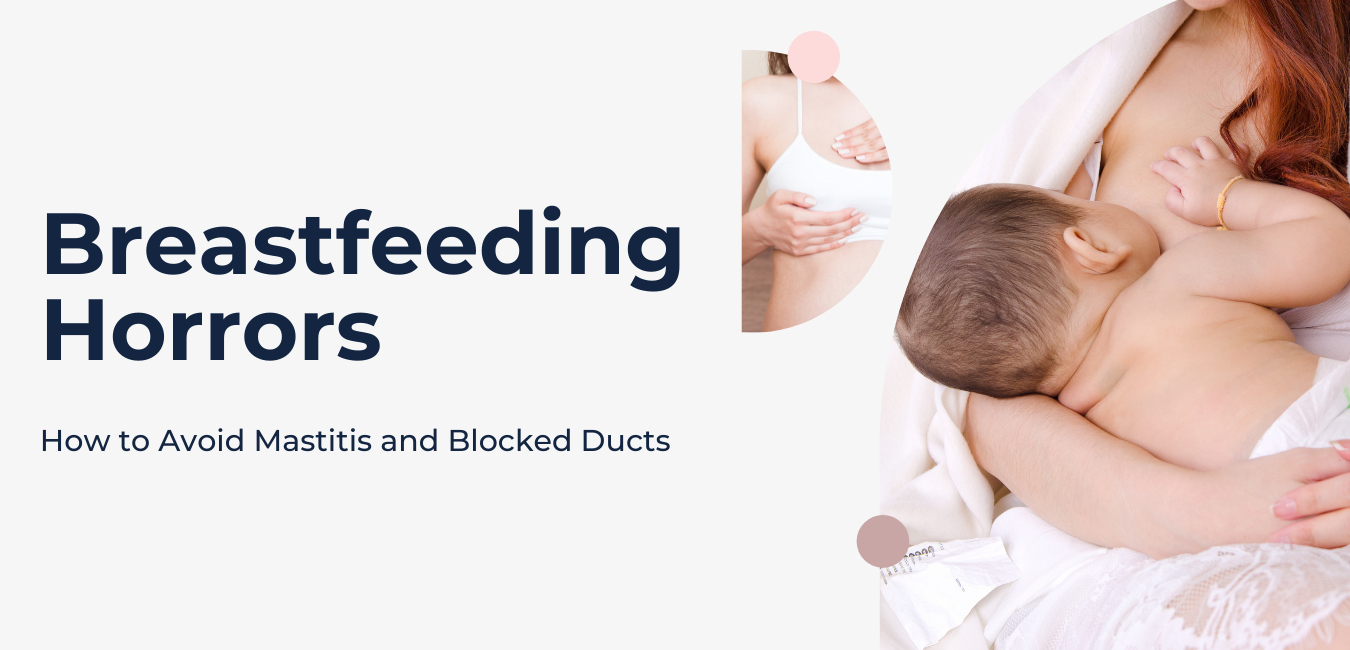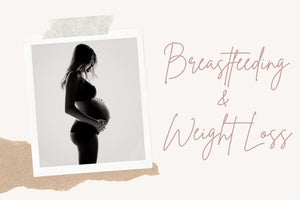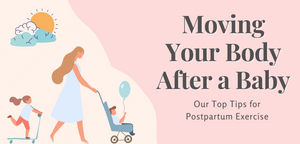Breastfeeding Horrors: How to Avoid Mastitis and Blocked Ducts

Breastfeeding can be an incredibly special and heartfelt experience for you and your baby. It’s a great opportunity to bond in a completely unique way, giving your little one the skin-on-skin contact that creates a comforting and loving relationship.
Despite these rewarding moments, it can also be a tiring time for mothers, especially when we have to deal with the horror of blocked ducts and mastitis. If these issues are something you’re already struggling with, or are things you’re actively trying to avoid, we’ve got you covered.
From one group of mummies to another, here are our top tips on how to avoid blocked ducts and mastitis, and the discomfort that comes alongside them.
What is Mastitis?

Mastitis is a condition which affects many mothers embarking on the breastfeeding experience. It usually only affects one breast and causes hot, swollen and painful inflammation.
Although people who aren’t breastfeeding can get Mastitis, it’s usually brought on by blocked ducts which create a buildup of milk that cannot be drained. This makes a mother more susceptible to infections and painful bouts of inflammation that can be hard to shift.
The symptoms of mastitis can vary, but the most common signs are:
- Swollen area on the breast that’s hot and painful to touch.
- A wedge-shaped lump or hardened area of skin.
- Burning pain or sensation — before, during or after feeding.
- Nipple discharge that’s white or streaked with blood.
Whilst mastitis is common and easy to treat, it’s important to see your doctor for advice, especially if you start experiencing flu-like symptoms.
One of the best treatments is to keep breastfeeding or expressing even after inflammation begins, so don’t feel like you need to stop if you experience symptoms. Getting your ducts flowing again is key to restoring your breasts back to good health.
Preventing Blocked Ducts and Mastitis
We know there’s a lot to think about when you’re a new mummy, never mind having to worry about your milk ducts getting blocked too! There are plenty of easy ways you can make sure they stay clear and healthy to ensure you and your little one stay happy.
Good hygiene is key to healthy breastfeeding

Keeping things hygienic seems like an obvious thing to point out, but when you’re new to parenting and rushing around after a demanding baby, the simple elements can be easily forgotten.
Mastitis begins with inflammation, and can develop into an infection pretty quickly when bacteria hangs around your milk ducts. It’s super important to make sure your breasts are always free from any unnecessary bacteria to keep things as clean and sanitary as possible.
An easy way to do this is to ensure that anyone who comes into contact with you or your little one always washes their hands. Whether it’s you, your midwife or your partner, keeping a strict hand washing policy can be the difference between healthy breasts and a painful infection. It’s ultra important to wash hands regularly, especially after nappy changes or cleaning up after the baby.
Changing your clothes frequently, particularly your nursing bra or maternity tops, can also help to avoid bacteria spreading. A nursing cover could also be a great way to keep you and your baby protected from any germs whilst feeding on the go.
A well-fitting bra and loose clothing is a must

Breastfeeding is a completely unique experience and very different to how many new mums expect it to be. Your body needs to adjust and adapt to its new role as chief feeder - your key tools being your breasts and the milk that they’re producing!
Taking care of your breasts during the feeding years is so important, and one of the best ways to do so is by wearing a well-fitted nursing bra - or no bra at all, if you prefer. Either way, loose clothing is a must. Opting for thin, airy and soft materials is a great way to give your breasts room to move and space to breathe, keeping things clean and comfortable at all times.
Restrictive bras or tight clothing can easily encourage a blockage of the milk ducts which could potentially lead to Mastitis, so they’re definitely best to avoid where possible!
An effective feeding position helps both you and your baby

Making sure your baby is in a good position to feed with a strong, deep latch is a very simple way to avoid blockage of the milk ducts. The key is to drain them fully and regularly, so getting into a comfortable position for both you and your little one makes this a lot easier.
We understand that every mum and baby is different, especially when it comes to breastfeeding. There are lots of great feeding positions and ultimately, it’s all about what works for you. Some of our top tips for getting the best feed include:
- Sit in a comfortable chair with a cushion or pillow at your side for support.
- Make sure your baby’s nose aligns with your nipple for good milk flow.
- Use the palm of your hand to support your baby’s neck whilst feeding.
- Work with your baby to decide when the feed is complete, but don’t be afraid to encourage them to take more. A longer feed is the best way to avoid blockages!
Feed or express as regularly as possible

As previously mentioned, it’s very important to make sure you’re emptying your milk stores as much as possible to avoid anything blocking up your ducts. Whilst the process is tiring, regular and frequent feeds will also give you and the baby a stronger and more stable routine, especially through the night.
Expressing milk can also be an effective way of avoiding a milk backlog, as well as giving you a chance to take a break for yourself. Simply pump until you’re empty and store the milk away for the baby to enjoy later!
Avoid scented nipple creams, ointments and pads

Whether you’re a mummy for the first time or breastfeeding another addition to your pack, we all know the stresses and strains caused by dry, sore or exhausted nipples. On top of mastitis and blocked ducts, there are a whole range of conditions which can make nipples irritable and painful. If you suffer from these issues, you may be tempted to use creams or ointments, but the chemicals in these products can often end up making your problems worse.
Our biggest piece of advice when it comes to nipple care is to try and use as little product as possible, and stay away from scented or chemical-based formulas. Using something natural and organic is a much better solution to dry skin or soreness and helps to avoid any inflammation or irritation to the milk ducts.
When you’re on the go, you might choose to use nipple pads to absorb any accidental leaks or spills. This is a great solution, but changing them regularly and allowing your breasts the space to breathe is the key to keeping everything fresh.
Conclusion
Breastfeeding is tough - we’ve been there too! It won’t always be smooth-sailing, but following these tips might just make things that little bit easier. The bond you’ll create with your baby whilst breastfeeding is worth all the extra precautions, we promise!
For more tips and helpful resources for breastfeeding mums, visit our blog.



